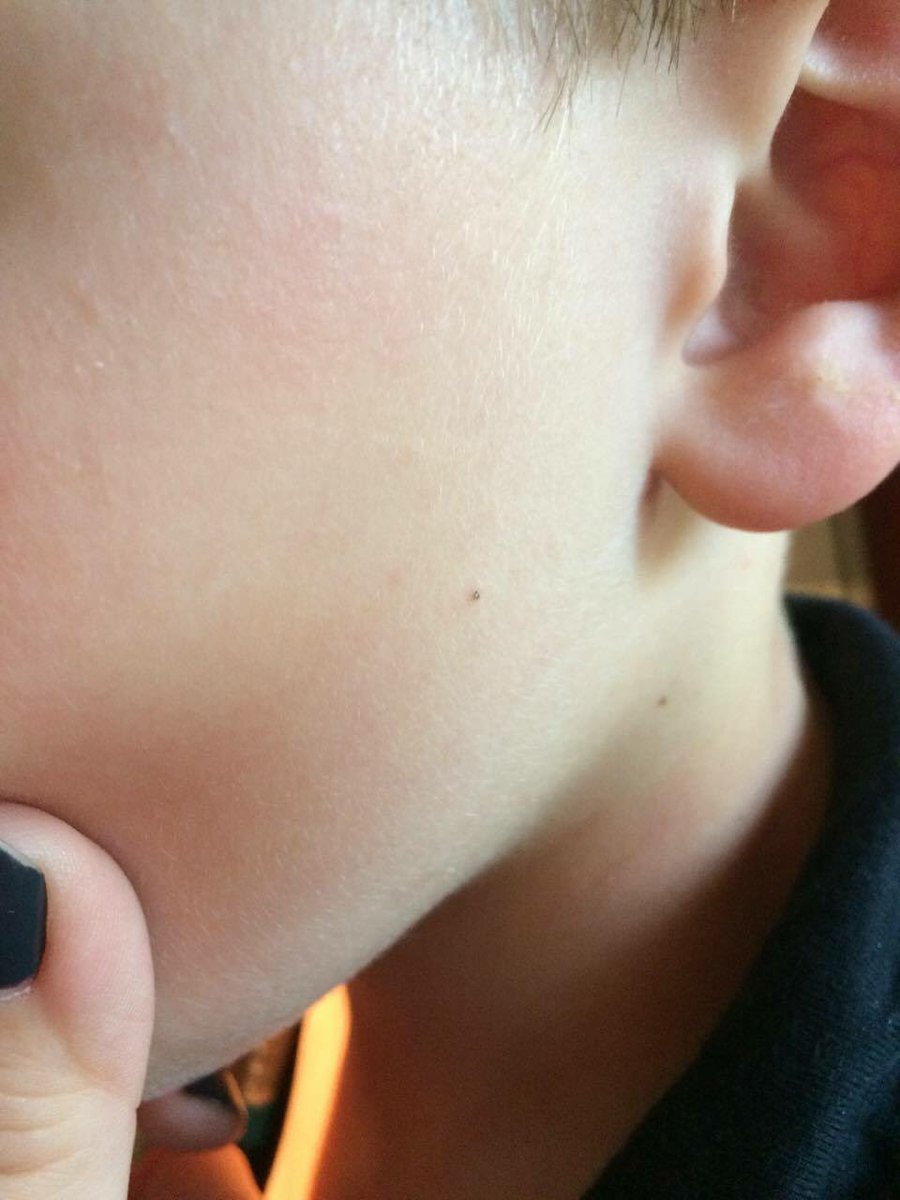Lyme basics

NO TICK IS A GOOD TICK Any tick that will bite a human may carry various infectious pathogens. Ticks will feed on various wild animals picking up infectious pathogens.
Lyme disease (often misspelled as “Lime” or “Lymes”) is an inflammatory infection that spreads to humans through tick bites.
Lyme disease is a borreliosis caused by borrelia bacteria, which commonly infects animals like birds, mice, other small rodents, and deer. Ticks pick up the bacteria by biting infected animals, and then pass it on to other animals, including human hosts. There are many strains or genospecies of borrelia that cause Lyme disease (borreliosis) in humans just as there are many strains of the flu virus that cause flu symptoms in humans, with some strains more virulent than others.
In the photo to the right, the two dark freckles, one on the cheek and one on the neck, are actually ticks attached to this child’s face.
3 stages of Lyme (often blurred together quite rapidly)
Stage 1: Early infection (first few days after infection)
Stage 2: Infection spreads (days to weeks following infection)
Stage 3: Chronic Lyme (days to weeks after infection if left untreated, or not properly treated, for months/years after infection)
Lyme disease is most treatable during Stage 1. As time passes, both treatment and diagnosis become more difficult. Symptoms worsen during each stage of infection, ranging from flu-like symptoms to neurological illnesses, including paralysis. With chronic Lyme disease there is not one system of the body that can be unaffected… this includes various hormone production as well.
Lyme disease is on the rise in Canada. Decrease your risk of infection by taking preventative action and learning more about Lyme.
Tick ID & Removal
Canada is home to many species of ticks, but the Ixodes Tick – more often known as the “black-legged” or “deer” tick – is the most common Lyme-carrier.
Ixodes ticks…
- Have hard-shelled brown and black bodies, but appear greyish when engorged and some times are confused with a skin tag
- Have 8 legs as adults, but baby ticks have only 6
- Are 1–5 mm long, but adults can grow up to 20 mm when feeding
Protect your family from Lyme. Learn how to identify various tick species and how to properly remove them if bitten. Identifying ticksSafe tick removal
Symptoms
Early treatment of Lyme disease is critical, however Lyme is very difficult to diagnose because symptoms vary from person to person. There are over 100 known symptoms of Lyme disease.
Common symptoms include:
- Developing a rash, sometimes shaped like a “bull’s eye” mark.
- Initial flu-like symptoms, such as: fever, headache, nausea, jaw pain, light sensitivity, red eyes, muscle aches and neck stiffness.
While some Lyme victims experience immediate symptoms after infection, others may have none for many months. Learn the symptoms
